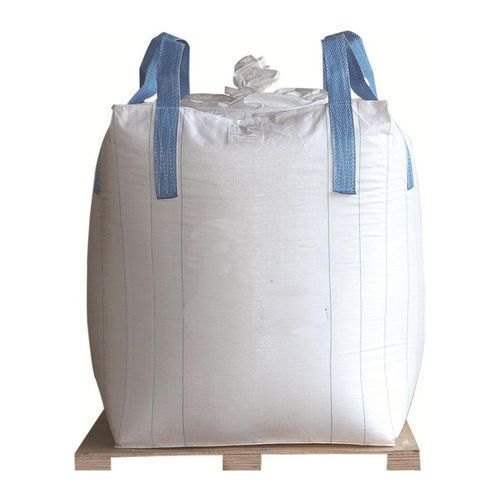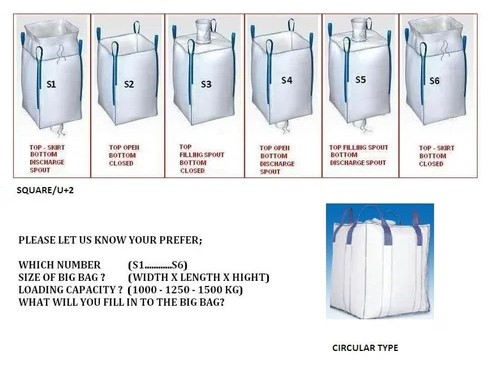The types of FIBC bags are generally categorized based on their electrostatic properties, which
are defined by the International Electrotechnical Commission (IEC) in the IEC 61340-4-4
standard. The different types are as follows:
I. Type A FIBC (Standard FIBC): Type A FIBC bags are made from non-conductive fabric and do not
have any special electrostatic safety features. They should only be used for non-flammable,
non-combustible materials that do not create any flammable or explosive atmospheres during
filling, emptying, or transportation.
II. Type B FIBC (Anti-Static FIBC): Type B FIBC bags are constructed from insulating fabrics but
have interconnected threads or filaments that provide some level of anti-static protection. They
prevent the occurrence of incendiary sparks or brush discharges on the bag’s surface. However,
they should not be used in environments where flammable dust or vapor atmospheres are present.
III. Type C FIBC (Conductive FIBC): Type C FIBC bags are made from conductive fabrics or have
conductive threads or filaments woven into the fabric. They are designed to safely dissipate
electrostatic charges that may build up during filling or emptying processes. Type C FIBC bags
have conductive loops, which need to be properly grounded during use to ensure effective static
electricity dissipation.
IV. Type D FIBC (Static Dissipative FIBC): Type D FIBC bags are made from static dissipative
fabrics that have a low breakdown voltage. Unlike Type C bags, they do not require grounding, as
they are designed to safely dissipate static electricity without the need for grounding. They
provide an extra level of safety by preventing the occurrence of incendiary sparks or brush
discharges on the bag’s surface.
It’s important to use the appropriate type of FIBC bag depending on the material being handled
and the environment in which they are used. Using the wrong type of FIBC bag for materials with
flammable or explosive properties can lead to safety hazards and accidents.

